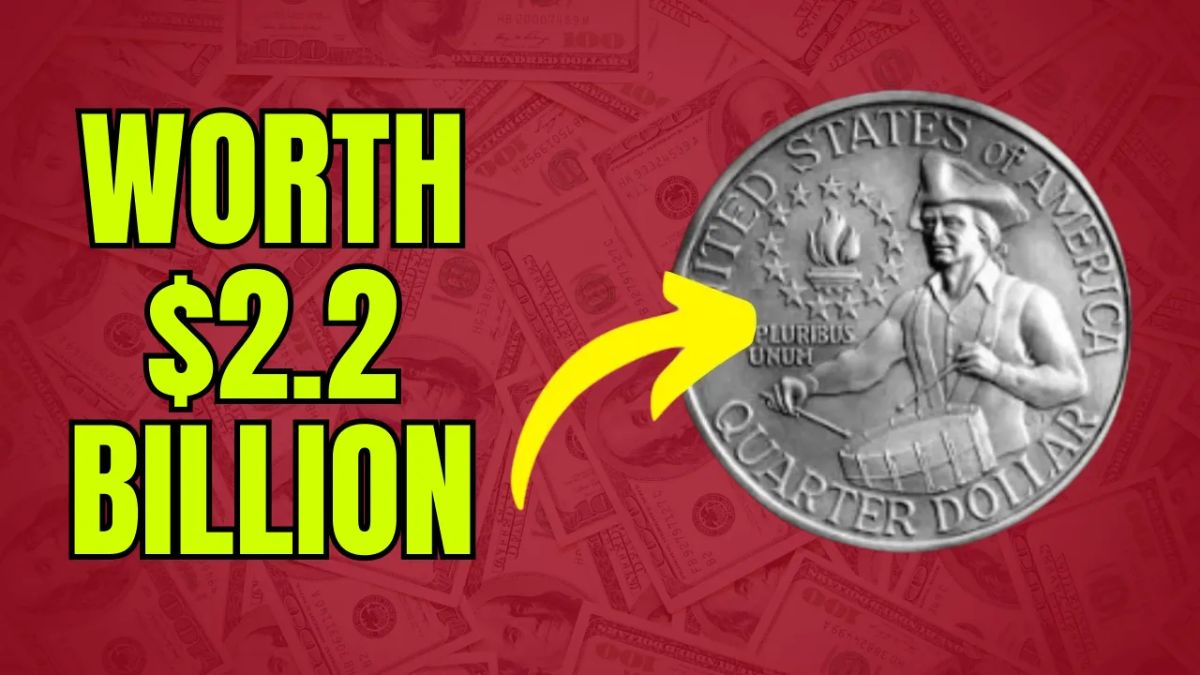Rare Bicentennial Quarter Valued at $2.2 Billion, Still in Circulation
Imagine finding a simple quarter in your pocket that could be worth $2.2 billion! It sounds unbelievable, but stories about a rare Bicentennial Quarter being valued at such an extraordinary amount have captured the imagination of collectors and casual coin hunters alike.
In this article, we will explore the history of the Bicentennial Quarter, why one version is so valuable, how you might identify it, and what you should do if you think you have a rare one.
What is the Bicentennial Quarter?
The Bicentennial Quarter was released in 1976 to celebrate the 200th anniversary of the signing of the Declaration of Independence. Unlike the regular quarters, these coins feature a special design:
-
Front (obverse): George Washington’s profile, the same as usual.
-
Back (reverse): A colonial drummer with a victory torch surrounded by thirteen stars.
The quarters were minted between 1975 and 1976, but they all bear the date 1776-1976 to honor the bicentennial celebration.
Millions of these coins were produced, but a few rare versions — due to mint errors or special production — are where the real fortune lies.
Overview Table: Rare Bicentennial Quarter Facts
| Category | Details |
|---|---|
| Coin Name | Bicentennial Quarter |
| Year Marked | 1776-1976 |
| Special Feature | Colonial Drummer Design |
| Material | Copper-Nickel (some rare silver proofs) |
| Estimated Value (Rare Version) | Up to $2.2 Billion (reported) |
| Still in Circulation | Extremely rare, but possible |
Why Is a Bicentennial Quarter Worth $2.2 Billion?
Most Bicentennial Quarters are only worth face value — 25 cents — or slightly more if they are in excellent condition or part of a proof set.
However, some special factors can make a coin extremely valuable:
-
Minting Errors: Rare errors like double striking, misalignment, or being struck on the wrong metal can make coins priceless to collectors.
-
Rare Metal Content: A few Bicentennial Quarters were struck in 40% silver, and special proof versions are much rarer.
-
Perfect Condition: A coin graded as MS-70 (perfect) by professional grading services can fetch incredibly high prices.
-
Collector Demand: The uniqueness of the coin, combined with collector enthusiasm, can drive prices sky-high.
The $2.2 billion value is likely based on a once-in-a-lifetime find — a coin with a unique error, pristine condition, and possibly historical significance that collectors are willing to pay massive amounts for.
Could the Rare Quarter Still Be in Circulation?
Surprisingly, yes — it’s possible, though extremely unlikely.
Many rare coins accidentally slip through and stay in circulation because:
-
People didn’t recognize their value.
-
Coins got mixed up during estate sales, garage cleanouts, or bank roll returns.
-
Some individuals used special coins without realizing it.
That’s why even today, coin hunters go through everyday change, hoping to find a treasure hiding in plain sight.
How to Spot a Rare Bicentennial Quarter
If you want to try your luck, here’s what you should look for:
-
Check the Date: It must have 1776-1976.
-
Look for Silver Shine: Silver quarters weigh more (5.75 grams) compared to regular copper-nickel ones (5.67 grams).
-
Inspect for Errors: Look closely for double die errors, off-center images, or other striking mistakes.
-
Proof Quality: Mirror-like surfaces and very sharp details indicate a proof coin, usually made in limited numbers.
-
Get it Weighed: Small differences in weight can suggest wrong metal content.
Using a magnifying glass can help spot tiny differences that your eyes might miss!
FAQs About the Rare Bicentennial Quarter
Q1. How can I tell if my Bicentennial Quarter is silver?
A1. Silver Bicentennial Quarters were mostly in special proof sets. They weigh slightly more (5.75 grams) and have a distinctive silver shine compared to regular coins.
Q2. Can a normal Bicentennial Quarter be worth $2.2 billion?
A2. No, only extremely rare versions with significant errors or perfect condition might reach extremely high values. Most regular ones are worth 25 cents to a few dollars.
Q3. Should I get my quarter graded?
A3. Yes, if you believe your coin is rare or in near-perfect condition, getting it graded by a professional service like PCGS or NGC can help confirm its value.
Q4. Where can I sell a rare Bicentennial Quarter?
A4. You can approach professional coin dealers, auction houses, or online collectible platforms. For extremely valuable coins, big auction houses are preferred.
Q5. Are there other valuable coins from 1976?
A5. Yes, Bicentennial versions of dollars (Eisenhower Dollars) and half-dollars (Kennedy Half Dollars) can also be valuable if they have rare features or minting errors.
Final Words
The idea that a simple Bicentennial Quarter could be worth $2.2 billion is both exciting and inspiring. Even if you don’t find the billion-dollar coin, searching through your change can still lead you to valuable collectibles worth hundreds or thousands of dollars.
Take a closer look at your coins. Use a magnifying glass, weigh them, and check for rare features. You never know — you might be holding a hidden fortune in your hands!


